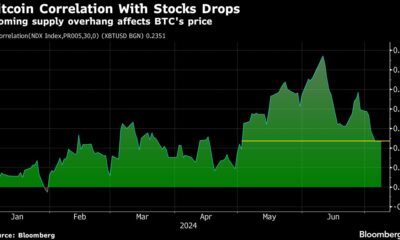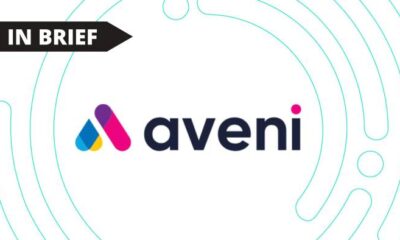Fintech
The impact on finance and fintech

As we head into national general elections in the US and Europe over the coming months, many financial institutions and fintechs are wondering just what it would mean to their operational and profit models if one of the incumbent national leaders wins, or
if a current lead candidate or likely candidate (in the case of the prime minister in the UK, based on majority party choice resulting from a change in power through parliamentary elections), should defeat the sitting incumbent.
Elections are coming this summer in the UK where Prime Minister Rishi Sunak called for voting on his party’s rule on July 4th. US voters will go to the polls for national elections in November, under the guidelines of its constitution for elections every
four years for president, four years for senators, and two years for its house of representatives. Even in France, where President Emmanuel Macron seeks a second term, just called to dissolve parliament and hold ‘snap’ elections in late June and early July.
The process of choosing politicians (and evaluating their backing party’s policies) is fraught with tension and a range of possible outcomes for consumers and businesses alike.
In the US, amid broadly improving economic statistics, including increasing employment and slower than expected increases in consumer prices (inflation), the Federal Reserve announced on June 12 that it will not take action to adjust baseline interest rates
yet, though it signalled a potential rate cut might still be coming later in the year. Other countries, such as Canada, have already started to reduce central bank rates. If positive economic trends continue as they have, more nations will likely follow.
How will candidates for president and prime minister capitalise on or attack present economic conditions – indicated by interest rates, unemployment levels, and inflation figures? The answers are important to business leaders, yet their specific concerns
and priorities will vary along with their actions of support or opposition to particular parties or candidates.
It’s possible many company leaders have clear ideas of potential ramifications of various election outcomes. Executives at major firms and many smaller ones, including banks, credit unions, and non-bank financial institutions as well as their financial technology
partners are preparing to address whatever eventuality occurs.
In the world of politics, there are fundamental and potentially economic and social landscape-rocking issues being discussed at the executive branch-level in the UK and US every day. Just how different – or similar – are the potential financial policy actions
and solutions being proposed or supported by the Biden Administration and Rishi Sunak and his cabinet? What about those who oppose these chief executives – either directly or at the party policy level? What do they propose instead?
Party-level and executive priorities often differ, or at least they can change based on the realities of political office. This is no different for economic policies, like banking regulations or desired interest rate or inflation targets, for example. However,
we can start with a look at the macro-level of financial policy influence and circle back to individual topics in specific categories in future stories as this especially important election year unfolds.
Why interest rates are at the root of election outlooks
Let’s start with defining interest rates and how they are determined. From two main base rates used in both the UK and the US, many other banking-related rates are directly or ultimately derived. Not all, as some rates depend on bond purchases and sales
or other factors that are set at will by banks – as in issuing credit cards and other unsecured credit loans and obligations. That said, at the root of the rates, are two commonly discussed benchmarks used in each country.
In the U.S. the most important, most highly-quoted rate of interest that banks pay on deposits or charge for loans (within reasonable bounds) to their most preferred customers – other banks, primarily – is called the ‘Fed Funds Rate’, or ‘Effective Federal
Funds Rate’. This is a “volume-weighted median of overnight federal funds (interbank borrowing and lending) transactions” reported in a daily report published by each Federal Reserve Bank (Fed) branch. The New York Fed publishes their report for each prior
business day’s activity at 9am Eastern time every business day. In mid-June, that rate was averaging 5.33%.
In the UK, meanwhile, the equivalent main rate that is offered between preferred bank customers in-country is called the Sterling Overnight Index Average (SONIA), which in recent years since it replaced the former LIBOR or ‘London Interbank Offered Rate’ (for
domestic purposes) has reflected interest just below the ‘Official Bank Rate’, or ‘Bank Rate’ for short. The Bank Rate is set – with SONIA trends in mind, during monthly meetings by the nine members of the Monetary Policy Committee (MPC) of the Bank of England.
As of mid-June, this rate was at 5.2%, very close to where it has rested since August 2023.
Fed Funds and Bank Rate policy are influenced in part by a relatively new globally-referenced index, this being the internationally recognised as Secured Overnight Financing Rate (SOFR) – an index the New York Fed created in April 2018 to replace LIBOR and
which reflects overnight US Treasury Bond Repurchase Agreements, or loans made following the previous day to meet liquidity and reserve requirements using these bonds as collateral.
SOFR is an influence on both US and UK benchmark, or ‘target’ rates from which many other interest rates are determined by banks – notably the rates they pay on deposits (usually minus a few percentage points and fractions thereof) or for loans (usually
plus a spread of several hundred basis points, the best of which is called the ‘prime’ rate, plus additional basis points, or fractions of percentage points in units of one hundred each) for their business and consumer clients.
What the Fed or MPC does in setting target rate policies has a huge and immediate impact on what everyone with variable interest rate loan terms or credit facilities pays to borrow money, or what they earn on deposit accounts held in most financial institutions.
That is why Federal Reserve and Bank of England rate-setting policy matters a lot to presidents and other politicians at the national level, and even right on down the line to local representatives of the parties involved. It makes a significant difference
impact on banks and fintechs too.
UK monetary policy may change sooner than expected, because prime minister Sunak made the surprise decision to call for early elections. Clearly, this election will have impacts on the fortunes of Sunak’s Conservative party and very possibly the late-fall
elections in the US as well.
What might current and pending financial policies and rate actions mean to this coming November’s presidential election, where each candidate commands close to half the projected votes, or in a general parliamentary election in the UK – which could result
in a new majority party in that country and possibly a new prime minister being chosen as well.
In the US: Fed and President – often friendly, yet not joined at the hip
In the US, policy related to interest rates is under the control of the Federal Reserve
Board of Governors, headed by Jerome ‘Jay’ Powell. The seven members of this committee, usually but not always professionals from the financial services world, are nominated by
a President and confirmed by the US Senate for 14-year terms and may not be re-appointed after serving a full term.
This group’s subcommittee called the Federal Open Market Committee (FOMC) gathers eight times per year to discuss potential rate actions and other monetary policy changes. Most changes in
rates are announced on the opening Tuesday of each session, and the next one is slated for July 30-31.
The president has no direct power over Fed actions or rate adjustments, though they do have influence over policy to an extent because of their role in electing new governors every two even-numbered years. Also, if a member of the FOMC either finishes their
term, dies in office, or resigns around that time, a sitting president may have the opportunity to directly nominate one or more governors in a brief period.
Depending on the political makeup of the US Senate when this nomination occurs, this could influence the success or failure of the nominee to gain confirmation, notwithstanding legitimate discussion of their professional qualifications for the role.
Important note: the president and senate also may nominate and confirm candidates for Chair and Vice Chair of the Federal Reserve Board, as well as Vice Chair for Supervision. This could provide additional avenues for exerting additional influence, political
or otherwise, on board positions and ultimately the direction of monetary policy decisions.
President Biden
reappointed Fed Chief Powell to a second term as Fed Chair after his defeat of former president Trump in 2020’s election, with his choice in early 2021 viewed as signalling “continuity” and agreement with the central bank’s decisions – even amid rising,
primarily pandemic-related inflation concerns at that time.
In doing so, he passed over another candidate for Powell’s job, Lael Brainard, instead re-nominating her to serve as Vice Chair of the Fed’s Board. Brainard had been nominated as a Fed governor by former president Barack Obama in 2014, as had Powell. After
around eight and a half years in the position, Brainard was appointed in February 2023 as Director of the National Economic Council and concurrently serves as chair of the White House Competition Council.
Most readers know just how influential the Federal Reserve is when it comes to US and even global interest rates. Recently, the Fed’s leaders have been hesitant to keep raising rates above the several increases they enacted in 2022 to help curb inflation.
This reticence is widely projected to continue, at least for the next cycle or two as inflationary pressures ease in the U.S.
Sunak and Biden: Stable or dropping rates huge help to re-election hopes?
Though they occupy different points along the political spectrum, President Biden, as well as Prime Minister Sunak in the UK, would both prefer for interest rates like Fed Funds and Bank Rate to remain where they are, or even to go a bit lower through the
rest of 2024. This would stabilise or possibly reduce the rates citizens of both countries pay for variable interest debt obligations in most cases, and by extension provide consumers with reasons to be more optimistic about spending money to help improve
the economy, buy homes, and more. Lower or stable bank or bank-derived borrowing rates could also stimulate businesses and other organisations to hire more workers or make greater investments in new equipment and to fund expansions of operations.
Generally speaking, when the economy is healthy, and no other major factors, issues, or particularly strong opposing candidates exert unusual influence on the political process, US presidents or UK prime ministers seeking a second term – the maximum permitted
under US Constitution- or continued service (in the case of the UK) usually get re-elected or kept in office.
Conversely, when the economy is struggling; unemployment is higher than average, inflation is higher than desired, or interest rates on unsecured loans or mortgages (the latter typically priced based on a number of factors including other government- issued
financial instruments as well as the Fed Funds rate) are steeper than in past years, the challenger has a much greater chance of winning the election.
Recent
polls continue to show that some voters aren’t giving Biden as much credit as he might hope for lower rates or slowing inflation. However, that could change as election day nears. Most Americans, for example, have heard once, twice, or a thousand times
a particularly sharp bromide uttered in 1992 by political strategist James Carville to then presidential candidate Bill Clinton, to describe the main election issue facing Clinton and incumbent President George Bush. It’s widely held to be a similarly important
factor for the majority of any given presidential electorate, no matter what the year: “It’s the economy, stupid!”
So, lower rates in one, or many, key areas in the UK, US, and countries around the globe offer strong points in any president’s or prime minister’s favour, if they want to be re-elected. That said, they are obviously not the only ones, and many other factors,
even beyond financial matters, are also involved. However, interest rates are extremely impactful to all segments of the economy. Banks and other financial institutions – and businesses of all kinds, including fintechs, generally benefit most from interest
rates that provide lower borrowing or reasonably high deposit rates to help power their business activities and earnings on idle cash. In the case of financial institutions or fintechs engaged heavily in embedded finance products and services, with proper
margins in place above these base interest rates, they can manage to profitably lend to consumers and businesses based on their lower costs paid on deposits to fund those lending obligations.
What could change the outlook for the US president, and perhaps the UK PM?
Big changes in economic conditions over the next three months, or some major event to cause major swings in consumer and business interest rates charged by banks during that time could increase the negative or positive impacts overall of interest rates on
the coming general elections later this year.
It’s unlikely that such dramatic moves would come from changes in the composition or planned actions of the US’s Federal Reserve Board or UK’s Monetary Policy Committee given their reputations for prudence and long tenures. So, it would likely have to be
something else that shakes up the markets, such as stock market corrections or increases, major changes in employment or productivity data, higher or lower inflation, supply chain or other pricing spikes or drops caused by unfavourable or fairer weather, or
numerous other influential economic factors.
What’s next in Finextra’s study of key factors for banks and fintechs to consider this election year?
The next topic of discussion will be rising inflation rates. Since 2021, the monthly-charted, annualised
US inflation rate rose steadily to as high as 9% until beginning to decline in July of 2022. The current rate (from mid-June 2024) is 3.3% Meanwhile, in the UK, the current inflation rate sits at
3%, though it had reached as high as 9.6% in October of 2022 before starting its decline to the present.
What impact will changes in inflation rates, and specifically increases or decreases in key consumer and business expenses. mean to financial services and fintechs this election year? Check back with us for the next story in our Finextra series.
Fintech
US Agencies Request Information on Bank-Fintech Dealings

Federal banking regulators have issued a statement reminding banks of the potential risks associated with third-party arrangements to provide bank deposit products and services.
The agencies support responsible innovation and banks that engage in these arrangements in a safe and fair manner and in compliance with applicable law. While these arrangements may offer benefits, supervisory experience has identified a number of safety and soundness, compliance, and consumer concerns with the management of these arrangements. The statement details potential risks and provides examples of effective risk management practices for these arrangements. Additionally, the statement reminds banks of existing legal requirements, guidance, and related resources and provides insights that the agencies have gained through their oversight. The statement does not establish new supervisory expectations.
Separately, the agencies requested additional information on a broad range of arrangements between banks and fintechs, including for deposit, payment, and lending products and services. The agencies are seeking input on the nature and implications of arrangements between banks and fintechs and effective risk management practices.
The agencies are considering whether to take additional steps to ensure that banks effectively manage the risks associated with these different types of arrangements.
SUBSCRIBE TO THE NEWSLETTER
And get exclusive articles on the stock markets
Fintech
What changes in financial regulation have impacted the development of financial technology?

Exploring the complex landscape of global financial regulation, we gather insights from leading fintech leaders, including CEOs and finance experts. From the game-changing impact of PSD2 to the significant role of GDPR in data security, explore the four key regulatory changes that have reshaped fintech development, answering the question: “What changes in financial regulation have impacted fintech development?”
- PSD2 revolutionizes access to financial technology
- GDPR Improves Fintech Data Privacy
- Regulatory Sandboxes Drive Fintech Innovation
- GDPR Impacts Fintech Data Security
PSD2 revolutionizes access to financial technology
When it comes to regulatory impact on fintech development, nothing comes close to PSD2. This EU regulation has created a new level playing field for market players of all sizes, from fintech startups to established banks. It has had a ripple effect on other markets around the world, inspiring similar regulatory frameworks and driving global innovation in fintech.
The Payment Services Directive (PSD2), the EU law in force since 2018, has revolutionized the fintech industry by requiring banks to provide third-party payment providers (TPPs) with access to payment services and customer account information via open APIs. This has democratized access to financial data, fostering the development of personalized financial instruments and seamless payment solutions. Advanced security measures such as Strong Customer Authentication (SCA) have increased consumer trust, pushing both fintech companies and traditional banks to innovate and collaborate more effectively, resulting in a dynamic and consumer-friendly financial ecosystem.
The impact of PSD2 has extended beyond the EU, inspiring similar regulations around the world. Countries such as the UK, Australia and Canada have launched their own open banking initiatives, spurred by the benefits seen in the EU. PSD2 has highlighted the benefits of open banking, also prompting US financial institutions and fintech companies to explore similar initiatives voluntarily.
This has led to a global wave of fintech innovation, with financial institutions and fintech companies offering more integrated, personalized and secure services. The EU’s leadership in open banking through PSD2 has set a global standard, promoting regulatory harmonization and fostering an interconnected and innovative global financial ecosystem.
Looking ahead, the EU’s PSD3 proposals and Financial Data Access (FIDA) regulations promise to further advance open banking. PSD3 aims to refine and build on PSD2, with a focus on improving transaction security, fraud prevention, and integration between banks and TPPs. FIDA will expand data sharing beyond payment accounts to include areas such as insurance and investments, paving the way for more comprehensive financial products and services.
These developments are set to further enhance connectivity, efficiency and innovation in financial services, cementing open banking as a key component of the global financial infrastructure.
General Manager, Technology and Product Consultant Fintech, Insurtech, Miquido
GDPR Improves Fintech Data Privacy
Privacy and data protection have been taken to another level by the General Data Protection Regulation (GDPR), forcing fintech companies to tighten their data management. In compliance with the GDPR, organizations must ensure that personal data is processed fairly, transparently, and securely.
This has led to increased innovation in fintech towards technologies such as encryption and anonymization for data protection. GDPR was described as a top priority in the data protection strategies of 92% of US-based companies surveyed by PwC.
Financial Expert, Sterlinx Global
Regulatory Sandboxes Drive Fintech Innovation
Since the UK’s Financial Conduct Authority (FCA) pioneered sandbox regulatory frameworks in 2016 to enable fintech startups to explore new products and services, similar frameworks have been introduced in other countries.
This has reduced the “crippling effect on innovation” caused by a “one size fits all” regulatory approach, which would also require machines to be built to complete regulatory compliance before any testing. Successful applications within sandboxes give regulators the confidence to move forward and address gaps in laws, regulations, or supervisory approaches. This has led to widespread adoption of new technologies and business models and helped channel private sector dynamism, while keeping consumers protected and imposing appropriate regulatory requirements.
Co-founder, UK Linkology
GDPR Impacts Fintech Data Security
A big change in financial regulations that has had a real impact on fintech is the 2018 EU General Data Protection Regulation (GDPR). I have seen how GDPR has pushed us to focus more on user privacy and data security.
GDPR means we have to handle personal data much more carefully. At Leverage, we have had to step up our game to meet these new rules. We have improved our data encryption and started doing regular security audits. It was a little tricky at first, but it has made our systems much more secure.
For example, we’ve added features that give users more control over their data, like simple consent tools and clear privacy notices. These changes have helped us comply with GDPR and made our customers feel more confident in how we handle their information.
I believe that GDPR has made fintech companies, including us at Leverage, more transparent and secure. It has helped build trust with our users, showing them that we take data protection seriously.
CEO & Co-Founder, Leverage Planning
Related Articles
Fintech
M2P Fintech About to Raise $80M

Application Programming Interface (API) Infrastructure Platform M2P Financial Technology has reached the final round to raise $80 million, at a valuation of $900 million.
Specifically, M2P Fintech, formerly known as Yap, is closing a new funding round involving new and existing investors, according to entrackr.com. The India-based company, which last raised funding two and a half years ago, previously secured $56 million in a round led by Insight Partners, earning a post-money valuation of $650 million.
A source indicated that M2P Fintech is ready to raise $80 million in this new funding round, led by a new investor. Existing backers, including Insight Partners, are also expected to participate. The new funding is expected to go toward enhancing the company’s technology infrastructure and driving growth in domestic and international markets.
What does M2P Fintech do?
M2P Fintech’s API platform enables businesses to provide branded financial services through partnerships with fintech companies while maintaining regulatory compliance. In addition to its operations in India, the company is active in Nepal, UAE, Australia, New Zealand, Philippines, Bahrain, Egypt, and many other countries.
Another source revealed that M2P Fintech’s valuation in this funding round is expected to be between USD 880 million and USD 900 million (post-money). The company has reportedly received a term sheet and the deal is expected to be publicly announced soon. The Tiger Global-backed company has acquired six companies to date, including Goals101, Syntizen, and BSG ITSOFT, to enhance its service offerings.
According to TheKredible, Beenext is the company’s largest shareholder with over 13% ownership, while the co-founders collectively own 34% of the company. Although M2P Fintech has yet to release its FY24 financials, it has reported a significant increase in operating revenue. However, this growth has also been accompanied by a substantial increase in losses.
Fintech
Scottish financial technology firm Aveni secures £11m to expand AI offering

By Gloria Methri
Today
- To come
- Aveni Assistance
- Aveni Detection
Artificial intelligence Financial Technology Aveni has announced one of the largest Series A investments in a Scottish company this year, amounting to £11 million. The investment is led by Puma Private Equity with participation from Par Equity, Lloyds Banking Group and Nationwide.
Aveni combines AI expertise with extensive financial services experience to create large language models (LLMs) and AI products designed specifically for the financial services industry. It is trusted by some of the UK’s leading financial services firms. It has seen significant business growth over the past two years through its conformity and productivity solutions, Aveni Detect and Aveni Assist.
This investment will enable Aveni to build on the success of its existing products, further consolidate its presence in the sector and introduce advanced technologies through FinLLM, a large-scale language model specifically for financial services.
FinLLM is being developed in partnership with new investors Lloyds Banking Group and Nationwide. It is a large, industry-aligned language model that aims to set the standard for transparent, responsible and ethical adoption of generative AI in UK financial services.
Following the investment, the team developing the FinLLM will be based at the Edinburgh Futures Institute, in a state-of-the-art facility.
Joseph Twigg, CEO of Aveniexplained, “The financial services industry doesn’t need AI models that can quote Shakespeare; it needs AI models that deliver transparency, trust, and most importantly, fairness. The way to achieve this is to develop small, highly tuned language models, trained on financial services data, and reviewed by financial services experts for specific financial services use cases. Generative AI is the most significant technological evolution of our generation, and we are in the early stages of adoption. This represents a significant opportunity for Aveni and our partners. The goal with FinLLM is to set a new standard for the controlled, responsible, and ethical adoption of generative AI, outperforming all other generic models in our select financial services use cases.”
Previous Article
Network International and Biz2X Sign Partnership for SME Financing
IBSi Daily News Analysis

SMBs Leverage Cloud to Gain Competitive Advantage, Study Shows
IBSi FinTech Magazine

- The Most Trusted FinTech Magazine Since 1991
- Digital monthly issue
- Over 60 pages of research, analysis, interviews, opinions and rankings
- Global coverage
subscribe now
-

 DeFi12 months ago
DeFi12 months agoDeFi Technologies Appoints Andrew Forson to Board of Directors
-

 Fintech12 months ago
Fintech12 months agoUS Agencies Request Information on Bank-Fintech Dealings
-

 News1 year ago
News1 year agoBlock Investors Need More to Assess Crypto Unit’s Earnings Potential, Analysts Say — TradingView News
-

 DeFi12 months ago
DeFi12 months agoSwitchboard Revolutionizes DeFi with New Oracle Aggregator
-

 DeFi12 months ago
DeFi12 months agoIs Zypto Wallet a Reliable Choice for DeFi Users?
-

 News1 year ago
News1 year agoBitcoin and Technology Correlation Collapses Due to Excess Supply
-

 Fintech12 months ago
Fintech12 months agoWhat changes in financial regulation have impacted the development of financial technology?
-

 Fintech12 months ago
Fintech12 months agoScottish financial technology firm Aveni secures £11m to expand AI offering
-

 Fintech12 months ago
Fintech12 months agoScottish financial technology firm Aveni raises £11m to develop custom AI model for financial services
-

 News1 year ago
News1 year agoValueZone launches new tools to maximize earnings during the ongoing crypto summer
-

 Videos5 months ago
Videos5 months ago“Artificial intelligence is bringing us to a future that we may not survive” – Sco to Whitney Webb’s Waorting!
-

 DeFi1 year ago
DeFi1 year agoTON Network Surpasses $200M TVL, Boosted by Open League and DeFi Growth ⋆ ZyCrypto













